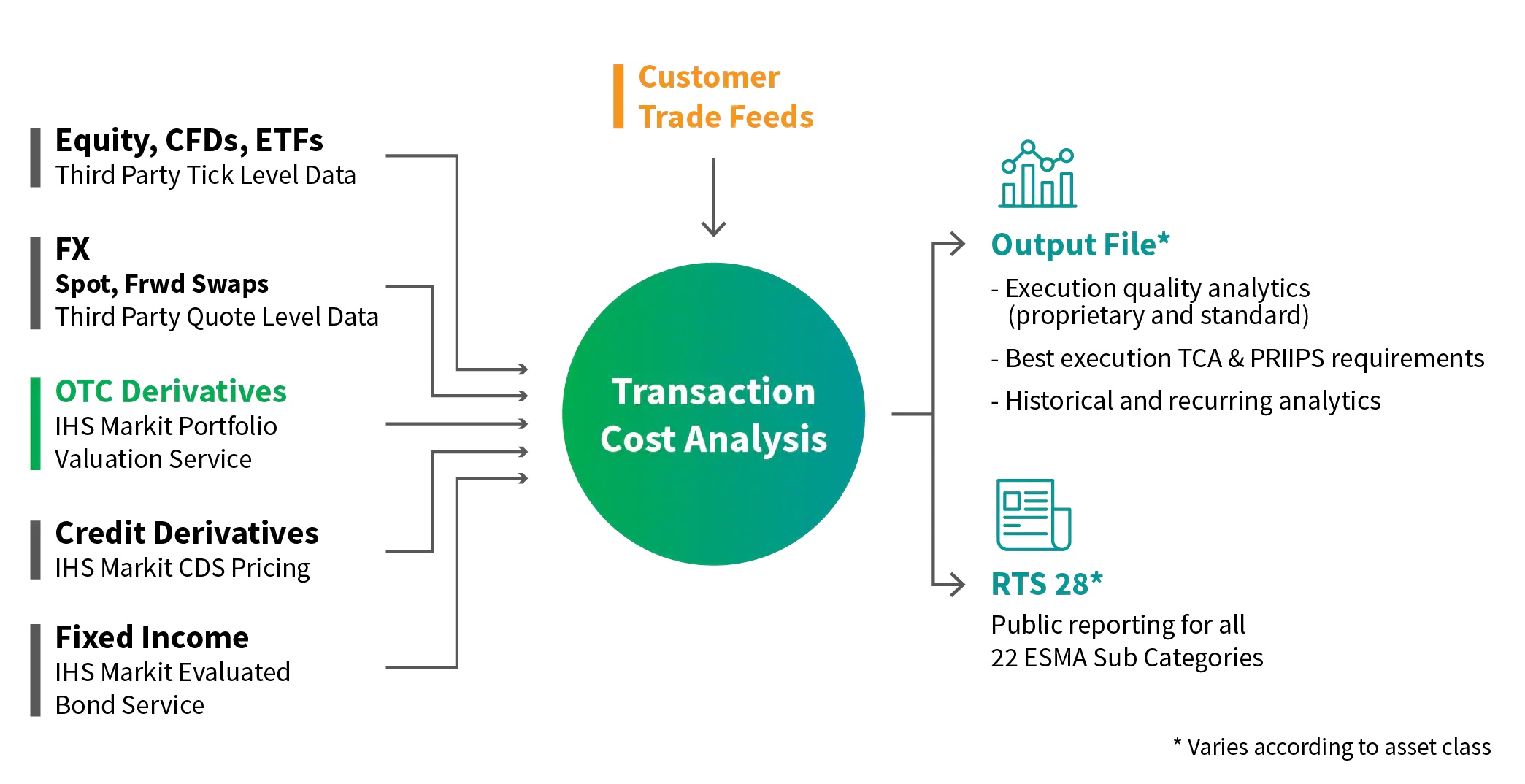Home>Finance>What To Do If You Can’t Afford Health Insurance


Finance
What To Do If You Can’t Afford Health Insurance
Modified: December 30, 2023
Learn how to handle your finances if you're unable to afford health insurance. Discover options and resources to manage your healthcare costs and stay financially secure.
(Many of the links in this article redirect to a specific reviewed product. Your purchase of these products through affiliate links helps to generate commission for LiveWell, at no extra cost. Learn more)
Table of Contents
- Introduction
- Explore Government Programs
- Medicaid
- Children’s Health Insurance Program (CHIP)
- Marketplace Health Insurance
- Subsidies and Cost-Sharing Reductions
- Special Enrollment Periods
- Other Government Programs
- Health Centers
- Community Clinics
- Free and Low-Cost Clinics
- Negotiate Medical Bills
- Seek Financial Assistance from Hospitals
- Use Prescription Assistance Programs
- Utilize Telemedicine Services
- Prioritize Preventive Care
- Focus on Healthy Habits and Lifestyle Choices
- Research Non-Profit Organizations
- Utilize Local Resources
- Conclusion
Introduction
Health insurance is a vital aspect of taking care of your well-being, but it can also be a significant financial burden for many individuals and families. If you find yourself unable to afford health insurance, it’s essential to understand that you still have options to access medical care and protect your health. In this article, we will explore various avenues you can explore to ensure you receive the healthcare you need, even without traditional health insurance.
While having health insurance provides peace of mind and helps cover the cost of medical expenses, there are numerous government programs and resources available to assist individuals who cannot afford conventional coverage. By exploring these options, you can access the necessary medical care without facing crippling financial strain.
It’s important to note that the information provided in this article is intended as a general guide and may vary depending on your location and circumstances. It is advisable to check with local resources and healthcare providers to determine the specific programs and services available to you.
With that in mind, let’s explore some of the key avenues you can consider if you find yourself unable to afford health insurance.
Explore Government Programs
When unable to afford health insurance, one of the first steps you should take is to explore government programs that offer assistance for healthcare coverage. These programs are designed to provide affordable or free healthcare options to individuals and families who meet certain eligibility criteria.
Here are some of the key government programs you can consider:
Medicaid
Medicaid is a joint federal and state program that provides healthcare coverage to low-income individuals and families. Eligibility for Medicaid is based on factors such as income, family size, and disability status. The program covers a wide range of medical services, including doctor visits, hospital stays, prescription medications, and more.
Children’s Health Insurance Program (CHIP)
CHIP is a program that provides low-cost or free health coverage for children in low-income families who do not qualify for Medicaid. It offers comprehensive healthcare benefits tailored specifically for children, including doctor visits, vaccinations, dental care, and more.
Marketplace Health Insurance
The Marketplace, also known as the Health Insurance Exchange, is an online platform where individuals and families can compare and purchase health insurance plans. Depending on your income level, you may qualify for subsidies that can significantly lower your monthly premiums. It’s important to note that open enrollment periods may apply, but certain circumstances, such as job loss or marriage, may qualify you for a special enrollment period.
Subsidies and Cost-Sharing Reductions
Through the Marketplace, you may be eligible for subsidies in the form of tax credits or cost-sharing reductions to help reduce out-of-pocket expenses. These subsidies are based on income and family size and can make healthcare coverage more affordable.
These are just a few examples of the government programs available to help individuals and families access affordable healthcare. Researching and understanding the eligibility requirements for these programs can be a crucial step in finding the right healthcare coverage for your needs.
Medicaid
Medicaid is a government program that provides healthcare coverage to low-income individuals and families. It is a joint federal and state program, and eligibility requirements may vary from state to state.
To qualify for Medicaid, you typically need to meet certain income and asset limits. The program considers factors such as household size, income level, and disability status when determining eligibility. In some states, Medicaid may also cover certain low-income adults who do not have dependent children.
Once enrolled in Medicaid, you can access a wide range of healthcare services, including but not limited to:
- Doctor visits and specialist appointments
- Hospital stays
- Prescription medications
- Laboratory tests and screenings
- Mental health services
- Dental care
- Vision care
- Preventive services, such as vaccinations and screenings
Medicaid provides comprehensive coverage and may include additional benefits specific to each state. It is important to familiarize yourself with the specific coverage options available in your state.
Applying for Medicaid can be done through various channels, such as online application forms, phone applications, or in-person assistance. Many states also have Medicaid eligibility specialists who can guide you through the application process and answer any questions you may have.
If you qualify for Medicaid, it is important to stay enrolled in the program to maintain your healthcare coverage. Some states may have annual renewal requirements, and failure to renew your Medicaid benefits could result in loss of coverage. Be sure to follow the renewal instructions provided by your state’s Medicaid program.
Overall, Medicaid is a vital resource for individuals and families who cannot afford health insurance. By providing comprehensive coverage for a wide range of healthcare services, Medicaid ensures that low-income individuals have access to the medical care they need to maintain their health and well-being.
Children’s Health Insurance Program (CHIP)
The Children’s Health Insurance Program (CHIP) is a government program that provides low-cost or free health coverage for children in low-income families who do not qualify for Medicaid. CHIP aims to ensure that children have access to the healthcare services they need to thrive and grow.
CHIP coverage benefits may vary by state, but generally include a wide range of healthcare services, including:
- Doctor visits and well-child check-ups
- Immunizations and vaccinations
- Hospital care and services
- Prescription medications
- Dental and vision care
- Laboratory services and X-rays
- Mental health services
The income eligibility requirements for CHIP typically depend on the size of the household and the state’s guidelines. CHIP coverage is available for children up to the age of 19, and some states even offer coverage for pregnant women.
Applying for CHIP can be done through various channels, such as online applications, mail-in forms, or in-person assistance. Many states also offer phone assistance to help families navigate the application process and answer any questions they may have.
One of the key advantages of CHIP is that it provides comprehensive coverage for children at little to no cost. The program ensures that children receive vital healthcare services, preventive care, and treatment for illnesses or injuries.
It is important to note that CHIP programs are state-specific, meaning the availability and coverage options may vary. While some states have expanded Medicaid to cover children in low-income families, others rely solely on the CHIP program to provide health coverage for eligible children.
If you have children and cannot afford health insurance, exploring the CHIP program can be a valuable step in ensuring their well-being. By utilizing this government program, you can provide your children with the necessary healthcare services to support their overall health and development.
Marketplace Health Insurance
The Marketplace, also known as the Health Insurance Exchange, is an online platform established under the Affordable Care Act (ACA) where individuals and families can compare and purchase health insurance plans. It provides a range of options to cater to different needs and budgets.
Marketplace health insurance plans offer comprehensive coverage that includes essential health benefits such as doctor visits, hospital stays, prescription medications, preventive care, and more. These plans are provided by private insurance companies that are approved by the Marketplace.
One of the significant advantages of Marketplace health insurance is the availability of subsidies, such as premium tax credits and cost-sharing reductions, which can help lower the cost of your monthly premiums and out-of-pocket expenses.
To determine your eligibility for subsidies, you will need to provide information about your household size and income when applying for Marketplace coverage. Subsidies are often provided on a sliding scale, meaning they are more substantial for individuals or families with lower incomes.
It’s important to note that the marketplace has open enrollment periods during which you can sign up for or make changes to your health insurance plan. However, certain qualifying life events, such as getting married, having a baby, or losing eligibility for another health insurance plan, may qualify you for a special enrollment period.
Browsing the Marketplace and comparing different health insurance plans can help you find coverage that meets your specific needs and budget. The Marketplace website provides tools and resources to help you understand the options available to you and make an informed decision.
When exploring Marketplace health insurance, keep in mind that different states may run their own marketplaces, while others use the federal marketplace. Be sure to determine which marketplace is applicable to your state and access the appropriate website for your location.
By utilizing the Marketplace, you can access a variety of health insurance plans and take advantage of subsidies to make healthcare coverage more affordable. It’s essential to carefully review the plans’ benefits, networks, and costs to ensure they align with your healthcare needs and budget.
Subsidies and Cost-Sharing Reductions
One of the key benefits of enrolling in a health insurance plan through the Marketplace is the availability of subsidies and cost-sharing reductions. These financial assistance programs help make healthcare coverage more affordable for individuals and families.
Here are two types of assistance you may be eligible for:
Premium Tax Credits
Premium tax credits are subsidies provided by the federal government that help lower the cost of monthly premiums for marketplace health insurance plans. These credits are based on your income and household size. The lower your income, the higher the potential premium tax credits you may receive.
When applying for health insurance through the Marketplace, you will estimate your income for the upcoming year. The Marketplace will then determine your eligibility for premium tax credits. The credits can be applied directly to your monthly premium, reducing the amount you need to pay out of pocket.
Cost-Sharing Reductions
Cost-sharing reductions are another form of financial assistance available to individuals and families with lower incomes. These reductions lower the out-of-pocket costs such as deductibles, copayments, and coinsurance for healthcare services covered under the Marketplace health insurance plans.
Cost-sharing reductions are only available for specific marketplace plans at the silver level. The amount of reduction you may receive depends on your income level. Generally, individuals and families with lower incomes are eligible for more significant reductions, allowing them to access healthcare services at a lower cost.
It’s important to note that to be eligible for premium tax credits and cost-sharing reductions, you must enroll in a health insurance plan through the Marketplace. These subsidies are not available for other types of health insurance coverage.
When comparing marketplace health insurance plans, it’s crucial to take into account the potential benefit of premium tax credits and cost-sharing reductions. These subsidies can significantly reduce the overall cost of your healthcare coverage and make it more affordable.
It’s essential to provide accurate income information when applying for health insurance and reporting any changes throughout the year. Any discrepancies or failure to report changes in income could affect the subsidy amount you receive. Therefore, it’s important to update the Marketplace with any income changes to ensure you receive the appropriate financial assistance.
By taking advantage of premium tax credits and cost-sharing reductions, you can alleviate some of the financial burdens associated with health insurance, making coverage more accessible and affordable for you and your family.
Special Enrollment Periods
While the Marketplace has specific open enrollment periods during which individuals can sign up for health insurance or make changes to their existing plans, there are also special enrollment periods (SEPs) that allow individuals to enroll outside of the regular enrollment periods.
SEPs provide flexibility for individuals who experience qualifying life events that make them eligible for a special enrollment opportunity. These events include:
- Losing or ending other health coverage, such as employer-sponsored insurance or Medicaid
- Getting married or divorced
- Having a baby or adopting a child
- Relocating to a new area
- Turning 26 and aging out of a parent’s health insurance plan
- Experiencing changes in your household income that affect your eligibility for premium tax credits or cost-sharing reductions
It’s important to note that each SEP has specific timeframes during which you must enroll in a health insurance plan. The timeframe usually begins 60 days before the qualifying event and extends 60 days afterward. It’s crucial to act promptly to ensure you can take advantage of these special enrollment opportunities.
When applying for health insurance during a special enrollment period, you will need to provide documentation or proof of the qualifying event. This ensures that individuals only enroll or make changes when they are genuinely eligible for the special enrollment opportunity.
To determine your eligibility for a special enrollment period, visit the Marketplace website or contact the Marketplace call center. They will guide you through the process and help you understand the documentation needed to prove your eligibility.
Having access to special enrollment periods is crucial for individuals who experience changes in their life circumstances that affect their health insurance coverage. It ensures that they can enroll in or make changes to their health insurance plans at the appropriate time, providing them with the necessary coverage when they need it most.
By taking advantage of special enrollment periods, you can maintain continuous health insurance coverage and protect yourself and your family from unexpected medical expenses.
Other Government Programs
In addition to Medicaid, CHIP, and Marketplace health insurance, there are other government programs that can provide assistance with accessing healthcare services for individuals who cannot afford traditional health insurance.
Here are a few examples of other government programs you can explore:
Health Centers
Federally Qualified Health Centers (FQHCs) provide affordable primary care services to individuals and families, regardless of their ability to pay. These centers offer a wide range of services, including preventive care, chronic disease management, and general healthcare services. They operate on a sliding fee scale based on income, ensuring that healthcare services remain accessible and affordable.
Community Clinics
Community clinics are local healthcare facilities that provide affordable healthcare services to underserved populations. These clinics may offer a variety of services, including primary care, dental care, mental health services, and more. The fees for services at community clinics are usually based on a sliding fee scale, taking into account income and family size.
Free and Low-Cost Clinics
Free clinics and low-cost clinics are charitable organizations or community-based initiatives that offer healthcare services to individuals who cannot afford traditional healthcare coverage. These clinics rely on volunteers, donations, and grants to provide free or low-cost medical care, including consultations, diagnostics, medications, and preventive services.
Prescription Assistance Programs
Prescription assistance programs are available to help individuals who struggle to afford their medications. These programs, often run by pharmaceutical companies, provide eligible individuals with discounted or free prescription medications. They may have specific eligibility criteria, such as income levels or specific medical conditions.
It’s important to research and explore the various government programs available in your area. Local healthcare providers, community organizations, and government websites can provide valuable information about the specific programs and services available to you.
By utilizing these government programs, you can access healthcare services at reduced or no cost, ensuring that you receive the medical care you need without facing overwhelming financial burdens.
Health Centers
Federally Qualified Health Centers (FQHCs) are community-based healthcare facilities that provide comprehensive and affordable primary care services to individuals and families, regardless of their ability to pay. These centers, also known as health centers, play a vital role in ensuring that underserved populations have access to quality healthcare services.
Here are key points to know about health centers:
Services Provided
Health centers offer a wide range of healthcare services, including:
- Preventive care, such as vaccinations, screenings, and health education
- Chronic disease management for conditions like diabetes, hypertension, and asthma
- Primary healthcare services, including routine check-ups, diagnosis, and treatment of common illnesses
- Behavioral health services, including mental health counseling and substance abuse treatment
- Dental care, such as cleanings, fillings, and extractions
- Pharmacy services, including access to affordable medications
- Referrals to specialized healthcare providers when needed
Sliding Fee Scale
FQHCs operate on a sliding fee scale, which means that the cost of care is adjusted based on an individual or family’s income and ability to pay. This ensures that healthcare services remain affordable and accessible for all patients, regardless of their financial situation.
Patient-Centered Approach
Health centers prioritize a patient-centered approach, focusing on the needs of the individual and providing comprehensive care that addresses physical, mental, and social well-being. The healthcare professionals working at health centers strive to build strong relationships with their patients and provide personalized care that meets their unique needs.
Locations and Accessibility
Health centers are located in communities across the country, including urban, suburban, and rural areas. They are strategically placed to serve populations with limited access to healthcare, such as underserved communities and medically underserved areas.
Health centers accept various forms of insurance, including Medicaid, Medicare, and private health insurance. For individuals without insurance, health centers provide services on a sliding fee scale, ensuring that no one is turned away due to financial constraints.
Benefits of Health Centers
Health centers offer numerous benefits to individuals and communities, including:
- Access to affordable, high-quality healthcare services
- Continuity of care, with a focus on long-term relationships with patients
- Reduced healthcare costs and avoidance of unnecessary emergency room visits
- Health education and preventive care to promote overall well-being
- Support for underserved populations and vulnerable communities
If you cannot afford traditional health insurance, health centers can provide an essential resource for your healthcare needs. They ensure that you receive the necessary medical care, regardless of your financial situation, promoting a healthier and more accessible healthcare system for all.
Community Clinics
Community clinics play a vital role in providing accessible and affordable healthcare services to individuals and families, particularly those who may not have access to traditional health insurance coverage. These clinics are community-based healthcare facilities that aim to meet the primary care needs of underserved populations.
Here are key points to know about community clinics:
Services Provided
Community clinics offer a wide range of healthcare services, including:
- Primary care services, such as routine check-ups, screenings, and vaccinations
- Treatment of common illnesses, injuries, and ongoing health conditions
- Chronic disease management, such as diabetes, hypertension, and asthma care
- Women’s health services, including reproductive health exams and family planning
- Mental health counseling and support services
- Dental care, such as cleanings, fillings, and extractions
- Pharmacy services, including affordable medications
Affordability and Sliding Fee Scale
Community clinics strive to make healthcare services affordable for all patients, regardless of their income level or insurance status. Many community clinics operate on a sliding fee scale, which means that the cost of care is based on an individual or family’s income and ability to pay. This ensures that healthcare services remain accessible and affordable for everyone in the community.
Community Engagement and Support
Community clinics are deeply rooted in the communities they serve. They actively engage with individuals and community organizations to understand the specific healthcare needs of the population and tailor their services accordingly. These clinics often collaborate with local resources and support networks to address the social determinants of health and provide holistic care to patients.
Locations and Accessibility
Community clinics are typically located in areas where there is a high demand for healthcare services, especially in underserved communities. They may be independent or affiliated with hospitals, community health centers, or nonprofit organizations. The goal is to ensure that individuals have convenient access to the healthcare services they need.
Benefits of Community Clinics
Community clinics offer several benefits to individuals and communities, including:
- Affordable and accessible healthcare services
- Continuity of care and personalized treatment
- Health education and preventive care to promote overall well-being
- Reduced healthcare costs and avoidance of unnecessary emergency room visits
- Engagement and collaboration with the local community
- Support for underserved populations and vulnerable communities
If you are unable to afford traditional health insurance, community clinics can provide a valuable resource for your healthcare needs. They strive to ensure that everyone in the community has access to affordable and quality healthcare services, promoting health and well-being for all.
Free and Low-Cost Clinics
Free and low-cost clinics play a crucial role in providing healthcare services to individuals and families who cannot afford traditional health insurance or have limited financial resources. These clinics offer affordable or no-cost medical care and strive to ensure that everyone has access to essential healthcare services.
Here are key points to know about free and low-cost clinics:
Services Provided
Free and low-cost clinics offer a wide range of healthcare services, including:
- Primary care services, such as routine check-ups, examinations, and screenings
- Treatment of common illnesses, injuries, and infections
- Chronic disease management for conditions like diabetes, hypertension, and asthma
- Pediatric care, including immunizations and well-child visits
- Reproductive health services, such as family planning and contraceptive counseling
- Preventive care, including vaccinations and health education
- Mental health counseling and support services
- Dental care, such as cleanings, extractions, and fillings
Affordability and Funding
Free and low-cost clinics are specifically designed to provide healthcare services to individuals and families who cannot afford traditional healthcare coverage. These clinics often operate on a sliding fee scale, which means that the cost of care is based on an individual’s income and ability to pay. Some clinics may offer services for free or at a significantly reduced cost through funding from government grants, donations, or community support.
Accessible Locations
Free and low-cost clinics are typically located in areas with higher concentrations of underserved populations and limited access to healthcare services. They may be independent organizations, part of a larger community health center, or affiliated with a hospital. The goal is to ensure that individuals in need have convenient access to medical care.
Eligibility and Documentation
In most cases, free and low-cost clinics do not require individuals to have health insurance or meet strict eligibility criteria. However, some clinics may require patients to provide income documentation or proof of residency to determine the appropriate level of sliding fee scale or eligibility for free services. It’s advisable to contact the clinic directly to understand their specific requirements.
Benefits of Free and Low-Cost Clinics
Free and low-cost clinics offer several benefits to individuals and communities, including:
- Access to affordable or no-cost healthcare services
- A welcoming and inclusive environment for individuals without health insurance
- Reduction in healthcare disparities and barriers to care
- Continuity of care and personalized treatment
- Connection to other local resources and support networks
If you are unable to afford health insurance, free and low-cost clinics can provide crucial healthcare services at a reduced cost or for free. These clinics prioritize accessibility and strive to ensure that individuals receive the necessary medical care, regardless of their financial situation.
Negotiate Medical Bills
When facing steep medical bills that you cannot afford, it’s important to know that you have options for negotiating and potentially reducing those costs. Here are some steps you can take to negotiate medical bills and make them more manageable:
Review the Bill
Take the time to carefully review your medical bills and make sure they are accurate and itemized correctly. Look for any errors or charges that seem unreasonable or duplicate. Understanding the breakdown of charges will help you in negotiating with healthcare providers or insurance companies.
Contact the Billing Department
Reach out to the billing department of the healthcare provider or hospital and explain your situation. In many cases, they may be willing to work with you to set up a payment plan or offer a discount for prompt payment. Provide information about your financial struggles and openly discuss your options.
Negotiate a Lower Rate
Don’t hesitate to negotiate a lower rate for the medical services you received. Research the fair market price for the procedure or treatment and use that as a basis for negotiation. In some cases, healthcare providers may be willing to accept a lower amount as long as it ensures payment.
Seek Financial Assistance Programs
Explore financial assistance programs offered by hospitals, non-profit organizations, or government entities. These programs can provide financial relief or even cover the entire cost of your medical bills depending on your eligibility criteria. Reach out to them and inquire about any available options.
Work with a Medical Bill Advocate
Consider working with a medical bill advocate who specializes in negotiating medical bills. These professionals can review your bills, negotiate on your behalf, and help you navigate the complexities of the healthcare billing system. They have the expertise to identify potential errors, contest questionable charges, and negotiate for a more favorable payment arrangement.
Payment Plans and Settlements
If you are unable to pay the full amount upfront, inquire about setting up a payment plan that fits your budget. Many healthcare providers are willing to work with patients to establish manageable monthly payments. Additionally, in certain situations, you may be able to negotiate a settlement and pay a lump sum amount that is less than the total bill.
Remember, it’s important to communicate openly and honestly with healthcare providers or billing departments. Exploring your options and advocating for yourself can lead to more affordable payment arrangements and potentially alleviate some of the financial burdens associated with medical bills.
Seek Financial Assistance from Hospitals
If you find yourself burdened with high medical bills that you cannot afford to pay, seeking financial assistance from the hospital you received treatment from can be a viable option. Many hospitals have financial assistance programs in place to help patients who are experiencing financial hardship. Here are some steps to take when seeking financial assistance from hospitals:
Contact the Hospital’s Financial Services Department
Start by contacting the hospital’s financial services department or billing office. Explain your financial situation and inquire about the possibility of receiving financial assistance or a reduction in your medical bills. They will guide you through the application process and provide the necessary forms and information.
Provide Documentation of Financial Hardship
Hospitals typically require documentation of your financial hardship, such as tax returns, pay stubs, bank statements, or proof of unemployment. Make sure to gather all the necessary documentation to support your application for financial assistance.
Submit an Application for Financial Assistance
Complete the financial assistance application provided by the hospital. The application will usually require information about your income, assets, expenses, and any existing health insurance coverage. Be thorough and accurate in filling out the application to improve your chances of receiving assistance.
Understand the Hospital’s Financial Assistance Policy
Familiarize yourself with the hospital’s financial assistance policy to understand the eligibility criteria and the types of assistance available. The policy will provide information on income thresholds, discounts, payment plans, and any specific requirements for qualification.
Explore Charity Care Programs
Hospitals often have charity care programs that provide free or reduced-cost medical services to eligible patients. These programs are designed to help individuals who have limited financial means and cannot afford their medical bills. Check if you meet the requirements for these programs and submit the necessary applications.
Seek Discounts or Payment Plans
If you do not qualify for financial assistance, inquire about discounts or payment plans. Many hospitals are willing to negotiate and work with patients to establish a reasonable payment plan that fits their financial situation. Setting up monthly payments can help alleviate the immediate financial burden and make it more manageable over time.
Remember, every hospital has its own criteria and policies for providing financial assistance. It is important to reach out to the hospital’s specific financial services department to understand the options available to you and take the necessary steps to seek financial assistance. By proactively addressing your financial situation with the hospital, you can potentially reduce the financial strain caused by medical bills.
Use Prescription Assistance Programs
Prescription medications can be a significant expense for individuals who cannot afford health insurance. However, there are prescription assistance programs available to help individuals access necessary medications at a reduced cost or even for free. Here are some steps to utilize prescription assistance programs:
Research Available Programs
Start by researching the prescription assistance programs that are available. Many pharmaceutical companies, non-profit organizations, and government agencies offer these programs. Each program may have specific eligibility criteria, so it’s important to understand the requirements and qualifications.
Check with Pharmaceutical Companies
Pharmaceutical companies often have patient assistance programs in place to provide medication at reduced costs for individuals who meet specific income criteria. Visit the websites or contact the pharmaceutical companies directly to inquire about their assistance programs and the application process.
Speak to Your Healthcare Provider
Discuss your financial situation and the challenges you face in affording medications with your healthcare provider. They may have information about local or regional prescription assistance programs that you can explore. They can also assist you in completing any necessary paperwork or providing documentation required for program enrollment.
Apply for Prescription Assistance Programs
Follow the application process for the prescription assistance programs you qualify for. This may involve completing application forms, providing proof of income, or submitting specific medical documentation. Be sure to submit all required materials accurately and promptly.
Utilize Patient Assistance Programs
Patient assistance programs provided by pharmaceutical companies offer medications at no cost or a significantly reduced price. If approved, you may receive the medication directly from the company or through a pharmacy participating in the program. These programs often require annual reapplication.
Look into Government Assistance Programs
Government programs like Medicare Extra Help, Medicaid, or State Pharmaceutical Assistance Programs (SPAPs) provide coverage and financial assistance specifically for prescription medications. Check if you qualify for any of these programs and apply accordingly.
Consider Generic or Alternative Medications
If the brand-name prescription is unaffordable, ask your healthcare provider if there are generic versions or alternative medications available that are more cost-effective. Generic medications contain the same active ingredients as brand-name drugs but are often available at a lower cost.
By utilizing prescription assistance programs, you can access the medications you need at a reduced cost or even free of charge. These programs are designed to help individuals who are unable to afford their prescribed medications and can significantly alleviate the financial burden of managing your health. Don’t hesitate to explore these programs and seek the assistance available to you.
Utilize Telemedicine Services
Telemedicine has revolutionized the way healthcare is provided, offering remote medical consultations and services that can be accessed from the comfort of your own home. Utilizing telemedicine services can be a cost-effective option for individuals who cannot afford traditional healthcare or face difficulty accessing medical facilities. Here are some key points to consider when using telemedicine services:
What is Telemedicine?
Telemedicine utilizes technology to connect patients with healthcare providers remotely. Through video or phone consultations, patients can receive medical advice, diagnoses, and even prescriptions from licensed professionals.
Types of Telemedicine Services
Telemedicine services cover a broad range of healthcare needs, including:
- Virtual consultations with doctors for non-emergency medical conditions
- Mental health counseling via video or phone calls
- Remote monitoring of vital signs and chronic conditions
- Remote radiology interpretation and remote pathology services
- Medication management and prescription refills
Accessing Telemedicine Services
To access telemedicine services, you will need a smartphone, tablet, or computer with a stable internet connection. Many healthcare providers now offer telemedicine visits as part of their services. Look for healthcare providers or telemedicine platforms that are reputable and authorized to practice in your area.
Benefits of Telemedicine
Utilizing telemedicine services offers several benefits:
- Convenience: Access healthcare services from anywhere, eliminating the need to travel to a physical clinic or office.
- Cost-Effective: Telemedicine visits are often more affordable compared to in-person consultations, as there are no travel expenses or waiting room fees.
- Time-Saving: Virtual consultations reduce wait times, allowing for quicker access to healthcare professionals.
- Continuity of Care: For individuals with chronic conditions, telemedicine can help in managing ongoing care and minimizing disruptions in treatment.
- Increased Accessibility: Telemedicine bridges the gap for individuals in rural or underserved areas who may have limited access to healthcare facilities.
Limitations of Telemedicine
It is important to acknowledge the limitations of telemedicine services. Certain medical conditions or emergencies may require in-person evaluation and treatment. Also, telemedicine relies on a stable internet connection, so individuals in areas with limited connectivity may face challenges in accessing these services.
Despite these limitations, telemedicine has proven to be a valuable and convenient option for many individuals in need of healthcare services. It provides a cost-effective and accessible way to receive medical advice and treatment. Consider exploring telemedicine services to access the care you need without the financial strain of traditional in-person visits.
Prioritize Preventive Care
When facing financial constraints that limit your access to healthcare, prioritizing preventive care becomes paramount. Preventive care focuses on maintaining good health and preventing the onset of diseases or complications through screenings, vaccinations, and lifestyle modifications. By investing in preventive measures, you can potentially reduce the need for more costly treatments down the line. Here are some key points to consider when prioritizing preventive care:
Regular Check-ups and Screenings
Schedule regular check-ups with your primary care provider. These visits allow for early detection and management of health conditions. Additionally, make sure to schedule recommended screenings, such as mammograms, colonoscopies, blood pressure checks, and cholesterol screenings, based on your age and risk factors.
Immunizations
Stay up to date on immunizations. Vaccinations protect against contagious and potentially serious illnesses, preventing the need for treatment and reducing healthcare costs. Check with your healthcare provider or local health department to ensure you are receiving the recommended immunizations for your age group.
Healthy Lifestyle Choices
Adopting healthy lifestyle habits is crucial for maintaining overall physical and mental well-being. Engage in regular physical exercise, eat a balanced and nutritious diet, manage stress effectively, and get enough sleep. These lifestyle choices can help prevent chronic conditions and promote a healthier life.
Preventive Services Covered by Insurance
Check your health insurance plan to understand what preventive services are covered. Many insurance plans provide coverage for preventive care, including screenings and vaccinations, at no additional cost to you. Take advantage of these covered services to ensure that you receive the necessary preventive care without incurring extra expenses.
Self-Care and Health Education
Take responsibility for your own health by practicing self-care and staying informed about your health. Stay aware of any symptoms or changes in your body and seek medical attention when necessary. Educate yourself about potential risk factors, healthy habits, and preventive measures relevant to your age and circumstances.
Community and Workplace Programs
Explore community programs or workplace wellness initiatives that offer preventive care services. These programs often provide access to screenings, health education, and support groups, promoting a holistic approach to health and well-being. Take advantage of these resources to enhance your preventive care practices.
By prioritizing preventive care, you can take proactive steps to maintain your health, prevent the onset of diseases, and potentially reduce future healthcare costs. Remember, prevention is key, and investing in your well-being today can lead to a healthier and more financially stable future.
Focus on Healthy Habits and Lifestyle Choices
When facing financial constraints that limit your access to healthcare, it becomes crucial to prioritize healthy habits and lifestyle choices. By adopting and maintaining a healthy lifestyle, you can increase your overall well-being and potentially reduce the risk of developing chronic conditions. Here are some key points to consider when focusing on healthy habits and lifestyle choices:
Eat a Balanced Diet
Adopt a balanced diet that includes a variety of fruits, vegetables, whole grains, lean proteins, and healthy fats. Limit processed foods, sugary beverages, and excessive consumption of salt. Eating a nutritious diet provides essential vitamins, minerals, and nutrients that support overall health and well-being.
Engage in Regular Physical Activity
Incorporate regular physical activity into your daily routine. Aim for at least 150 minutes of moderate aerobic exercise or 75 minutes of vigorous aerobic exercise per week, along with strength-training exercises that target major muscle groups. Physical activity helps maintain a healthy weight, strengthens the immune system, and promotes cardiovascular health.
Maintain a Healthy Weight
Strive to achieve and maintain a healthy weight for your body type and height. Excess weight can increase the risk of various health conditions, including heart disease, diabetes, and certain cancers. Focus on making sustainable lifestyle changes rather than resorting to quick-fix diets or extreme measures.
Get Enough Sleep
Prioritize getting adequate sleep each night. Aim for 7-9 hours of uninterrupted sleep to support overall health. Sufficient sleep is essential for cognitive function, immune function, and emotional well-being. Establish a bedtime routine and create a sleep-friendly environment to enhance the quality of your rest.
Manage Stress Effectively
Develop healthy coping mechanisms to manage stress effectively. Chronic stress can impact physical and mental health. Engage in stress-reducing activities such as meditation, deep breathing exercises, yoga, or engaging in hobbies that bring you joy and relaxation.
Avoid Harmful Substances
Avoid tobacco, excessive alcohol consumption, and recreational drug use. These substances can have detrimental effects on your health and increase the risk of various diseases. If you need support in quitting these habits, explore resources such as support groups or counseling.
Seek Emotional Support
Take care of your mental health by seeking emotional support when needed. Reach out to trusted friends, family members, or support groups. If you experience persistent feelings of sadness, anxiety, or other mental health issues, consider seeking professional help from a mental health professional.
Educate Yourself about Health
Stay informed about health-related topics, including preventive measures, screenings, common health conditions, and appropriate responses to symptoms. Utilize reliable sources such as reputable websites, healthcare professionals, and public health organizations to stay up to date.
By focusing on healthy habits and lifestyle choices, you can significantly improve your overall well-being. Taking steps to prioritize your health through proper nutrition, regular physical activity, stress management, and adequate sleep can contribute to a healthier and more balanced life, even in the absence of extensive healthcare resources.
Research Non-Profit Organizations
When facing financial constraints and limited access to healthcare, it is essential to explore non-profit organizations that provide support and resources for individuals in need. These organizations often offer a range of services, including access to healthcare, financial assistance, and educational programs. Here are key points to consider when researching non-profit organizations:
Identify Relevant Non-Profit Organizations
Start by identifying non-profit organizations that focus on providing healthcare support, financial assistance, and other resources. Look for organizations that align with your specific needs, whether it’s medical care, prescription assistance, mental health support, or general health education.
Review Their Mission and Services
Visit the websites and review the mission statements and services provided by the non-profit organizations. Understand their goals, target audience, and the specific healthcare support they offer. Additionally, look for any eligibility requirements or application processes for their services.
Explore Financial Assistance Programs
Many non-profit organizations have financial assistance programs designed to help individuals who are unable to afford necessary healthcare services. These programs often provide financial support for medical bills, prescription medications, and other healthcare expenses. Review the criteria for these assistance programs and determine if you meet the requirements.
Utilize Educational Resources
Non-profit organizations often provide valuable educational resources on various health topics. These resources can include informative articles, webinars, workshops, and classes to help you better understand your health and make informed decisions. Take advantage of these educational opportunities to enhance your health knowledge.
Network and Support Groups
Non-profit organizations often facilitate networking opportunities and support groups for individuals facing similar health challenges. Engaging with these groups can provide emotional support, shared experiences, and access to valuable resources. Connect with others who can offer guidance and understanding.
Stay Connected with News and Updates
Sign up for newsletters or follow the social media accounts of non-profit organizations of interest. This will allow you to stay informed about their programs, upcoming events, and any new initiatives that may benefit you. Stay engaged with these organizations for ongoing support.
Research Online Directories
Utilize online directories and databases that specialize in listing non-profit organizations and their services. These resources often provide comprehensive information and search functionalities to help you find relevant organizations based on your specific needs and location.
Remember to verify the credibility and reputation of non-profit organizations before seeking their assistance. Research online reviews, consult trusted sources, and reach out to local healthcare professionals or social service agencies for recommendations.
By researching non-profit organizations and their available resources, you can tap into valuable support systems that can provide access to healthcare services, financial assistance, educational materials, and emotional support. These organizations are dedicated to helping individuals in need and can provide a lifeline in times of limited healthcare access or financial hardships.
Utilize Local Resources
When you are unable to afford traditional health insurance, it is essential to tap into local resources that can provide support and access to healthcare services. Local resources can range from community clinics and health centers to government programs and charitable organizations. Here are key points to consider when utilizing local resources:
Research Local Health Clinics and Centers
Start by researching local health clinics and centers in your area. These facilities often offer affordable or free healthcare services based on a sliding fee scale. Contact them to understand the services they provide and whether you meet the eligibility criteria.
Community Programs and Events
Stay informed about community programs and events focused on healthcare and wellness. Many communities organize health fairs, screenings, and educational workshops. Attend these events to receive free or low-cost services, access health information, and connect with local healthcare providers and organizations.
Government Health Programs
Explore government programs available in your area that provide assistance with healthcare services. These programs may include Medicaid, Children’s Health Insurance Program (CHIP), or other state-based initiatives designed to provide coverage for individuals and families in need. Check your eligibility and apply for these programs as appropriate.
Local Charitable Organizations
Research local charitable organizations that focus on healthcare assistance. These organizations may offer financial aid for medical bills or prescription medications, access to resources, and other support services. Reach out to them to understand the services they provide and the application process.
Non-Profit Clinics
Consider non-profit clinics in your area that provide healthcare services to individuals who cannot afford traditional health insurance. These clinics often operate on a sliding fee scale or offer free services based on eligibility. Contact them to inquire about the services they offer and how to access care.
Local Health Department
Contact your local health department to inquire about resources and programs available in your community. They can provide information about free or low-cost health clinics, vaccination programs, and other initiatives aimed at improving public health. Stay updated on health alerts and recommendations provided by the health department.
Support from Community Networks
Engage with community networks, social service agencies, and local support groups. These networks often have information about available resources, support programs, and financial assistance options. Seek guidance and ask for recommendations from individuals who have navigated similar situations.
Remember, each community may have different resources available, so it is important to research and connect with local organizations and programs specific to your area. By utilizing these local resources, you can access healthcare services, financial assistance, and valuable support systems to navigate your healthcare needs, even without traditional health insurance.
Conclusion
When faced with the challenge of not being able to afford health insurance, it is important to remember that there are options available to access healthcare and protect your well-being. By exploring government programs such as Medicaid, CHIP, and the Marketplace, you can find affordable or free healthcare coverage tailored to your needs. Additionally, taking advantage of subsidies and cost-sharing reductions can help lower the cost of insurance premiums and out-of-pocket expenses.
Moreover, prioritizing preventive care, adopting healthy lifestyle choices, and utilizing telemedicine services can contribute to maintaining your health and reducing the need for more costly treatments. Researching and utilizing resources offered by non-profit organizations, community clinics, local health departments, and charitable organizations can also provide crucial assistance and support.
When dealing with medical bills, negotiating with healthcare providers, seeking financial assistance from hospitals, and using prescription assistance programs can help alleviate some of the financial burdens associated with healthcare costs. Additionally, leveraging local resources, such as community clinics and support networks, can provide access to affordable healthcare services and connect you with valuable resources.
Though the inability to afford health insurance can be challenging, it is essential to remain proactive and take advantage of the resources available to ensure you receive the healthcare you need. By exploring various options and staying informed about local resources and programs, you can make informed decisions and navigate your healthcare journey with confidence.
Remember to consult with healthcare professionals, reach out to community organizations, and stay informed about healthcare policies and changes that may impact your situation. By staying proactive and utilizing the resources available, you can prioritize your health and well-being, even without traditional health insurance.














